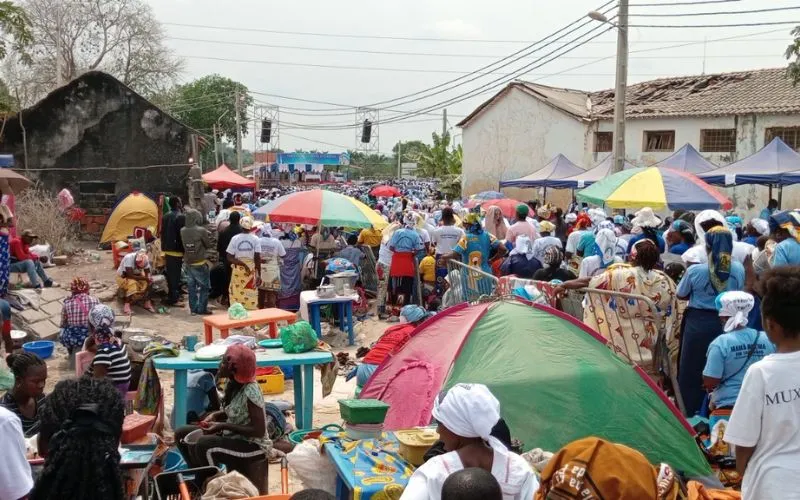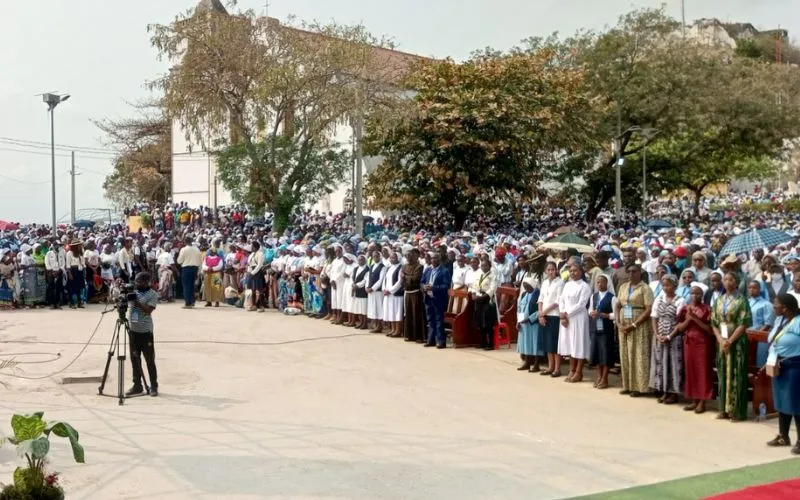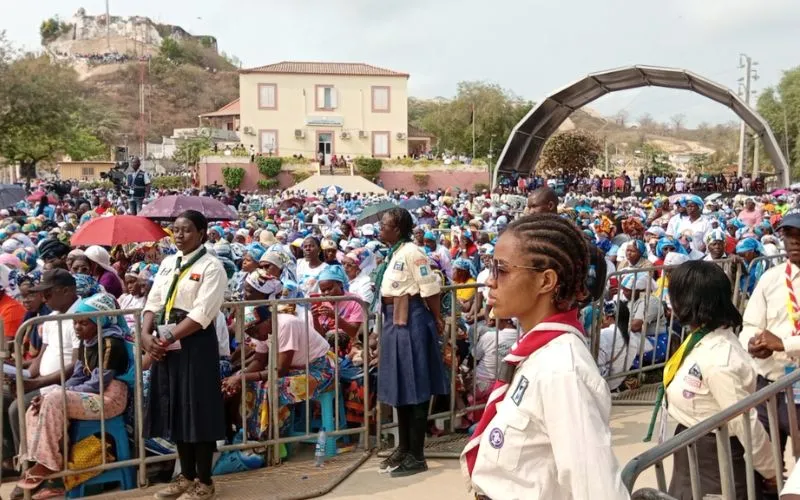Considered the most popular place of pilgrimage and worship in Angola, the Shrine of Our Lady of Muxima is located some 130 kilometers from the country’s capital city, Luanda., and sits on the edge of the Kwanza River.
Every year, the Shrine attracts local and foreign pilgrims. In the local Kimbundu language, “Muxima” means heart, a name given to the Shrine due to its prime location in the middle (heart) of the province.

The village of Muxima was occupied by the Portuguese in 1589; they built a fortress and the Church of Nossa Senhora da Conceição da Muxima.
A popular place of devotion to our Lady from one generation to the next, the Marian pilgrimage received a boost when Angola’s Diocese of Viana was created in 2007, inaugurating a new phase in the history of the Shrine.
(Story continues below)
On August 31, Bishop Manuel da Silva Rodrigues Linda of the Catholic Diocese of Porto in Portugal, who was guest of honor at the pilgrimage, lauded Angolans for their successful reconciliation process that has led to renewed peace and a closer relationship between the Catholic Church and the State.

“Angola is in a beautiful process, having rediscovered peace. I congratulate you for that, and for the process of rapprochement with the Catholic Church, from which the people of God—both members of the State and the Church—benefit,” Bishop Linda told pilgrims during the evening Mass on August 31.
Reflecting on the country's past, Bishop Linda expressed hope for enduring peace in Angola, urging Angolans to “avoid the tragedies seen in other parts of the world, including wars and human rights violations.”
He also warned of the “potential dangers of social media, which, despite their benefits, can be misused to spread negativity.”

“It is disheartening to see people using social media to speak ill of others. May this not take root in Angola,” he appealed.
Our Lady of Muxima intercedes for peace not only in Angola but across the globe, Bishop Linda went on to say, and added, “She wishes that the tribes, provinces, and people of this beloved nation live in unity and friendship, working together for the common good.”
Meanwhile, in his homily during the opening Mass of the pilgrimage on August 30, Archbishop Filomeno do Nascimento Vieira Dias of the Catholic Archdiocese of Luanda called on the pilgrims to emulate the Blessed Virgin Mary as the model of the Church and virtues.
“We must speak, act, and conduct ourselves like Mary, and imitate her as the model of the Church. In her, we find the perfection of the Church, the first and true disciple of Christ. We should imitate her faith, which is expressed in her 'yes' to God's designs and her love for humanity, for whom she intercedes, just as she did at the wedding at Cana when the wine ran out,” Archbishop Dias said.
He continued, “Being a devotee, a child, or a pilgrim of Mary is demanding, just as being a Christian is a new birth, a new way of living, and a new life – a discovery of an absolute truth. The true child of Mary must reflect the characteristic traits of their mother.”
The Angolan Catholic Church leader further said, “We, the children of Mary must be those who walk with her on the same paths, attend the same school of tenderness, solidarity, and openness to others, our brothers and sisters.”
“This is the strength of our pilgrimage, the strength of our devotion – a devotion that becomes practical in our gestures, thoughts, and actions. Pilgrimage is about going out to meet her with a special attitude, a desire to live with her, and thus become pilgrims who bear witness to her love,” the Local Ordinary of Luanda said.
João Vissesse is an Angolan Journalist with a passion and rich experience in Catholic Church Communication and Media Apostolate.















